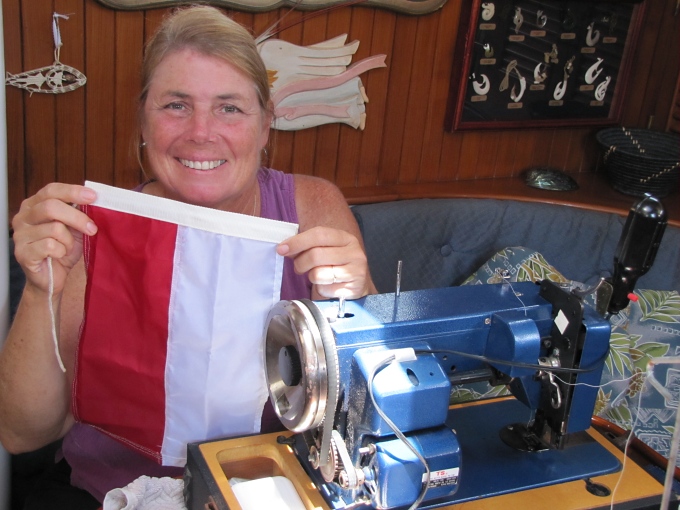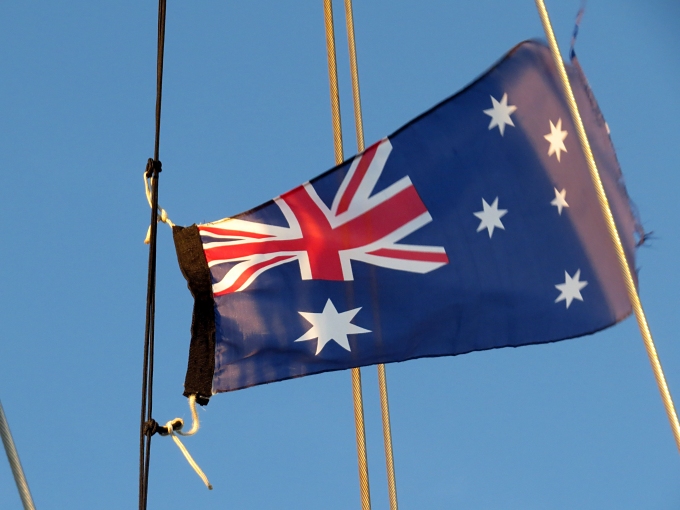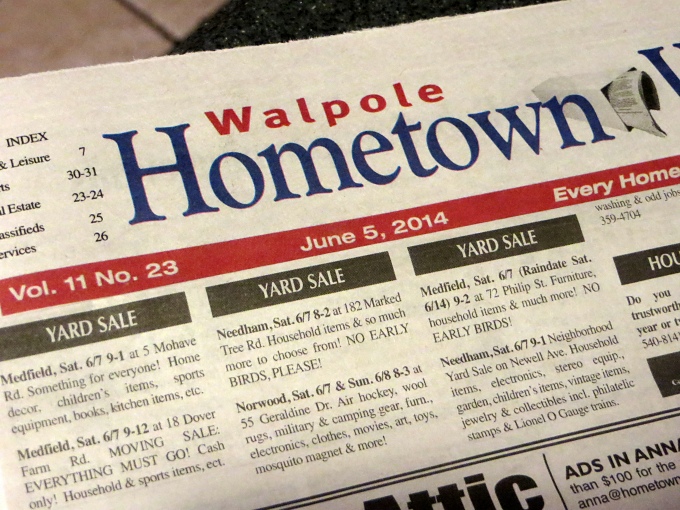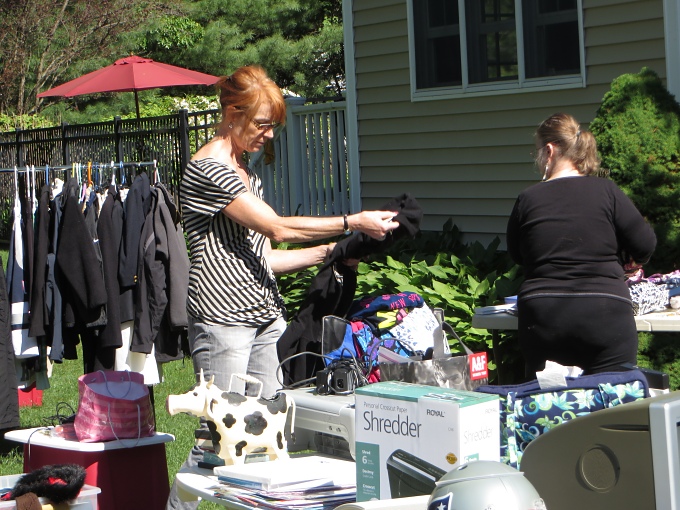Someone asked the other day if we always fly an Australian flag while we're in Australia and the answer is definitely yes. When traveling to other countries, flying a miniature version of the host country's national flag at the starboard spreader is considered proper boat etiquette and is customary in foreign ports. It's called a courtesy flag. Since Sailrite has just come aboard as a sponsor for our blogsite and web page, we thought this might be an appropriate time to chat a little about courtesy flags. Plus, we're only sailing the Great Australian Bight at the moment and it's not always that interesting.

There are times when courtesy flags for the countries we intend to visit are difficult to locate in advance. More often though, they're just prohibitively expensive ($20-50 US). Do the math … we've visited 31 countries … that's quite a hit to the old budget. Plus flags don't last all that long in the salt, wind and elements, so if you stay awhile in a country, you find yourself having to replace the courtesy flag. Cha...ching!
Over the years, I've found that simply making our own is the easiest, least expensive and most convenient solution to this problem. The results aren't always perfect, but our courtesy flags easily pass the 20-foot visual test when they are aloft flying from the flag halyard. Quite honestly, beyond saving money, I try to save time as well, so I cut corners whenever possible. A simple courtesy flag, not counting labor, costs under $1. Adding an emblem to the canton or detail to the charge increases the cost, but no courtesy flag I've made has ever cost me more than $4US.

When we first moved aboard, I purchased a little book showing country flags of the world primarily to identify foreign-flagged vessels and also with a mind for making our own courtesy flags. Nowadays, I wouldn't even buy the book; it would just as easy and cheaper to download free clip art of country flags for those countries on our itinerary. There are several books and kits available for making courtesy and signal flags, but since they weren't as easily available when I first started constructing my own, I've just continued to make my own flags as we go along.

I purchased a yard in various colors (red, green, blue, white, yellow, black) of nylon flag fabric and all other materials I needed from Sailrite when we first started cruising in 2000. You can use other fabric, but the flag nylon seems to hold up the best. I've never had to replenish my stock though I've made lots of flags. I'm sure there are other sources, but Sailrite had everything I needed in one convenient catalog (now conveniently on-line) and the prices were very reasonable. I always keep a hard copy of their catalog on the boat for planning purposes on those occasions when internet is not available.

Additionally, I bought various colors of sail tape and some felt squares of colors I couldn't get in regular nylon, like the turquoise required for Fiji's flag, for instance. It's not very hard to make a basic flag. There are a few basics to remember and several shortcuts that can save you time.
The basics:
1. Decide what size flag you want to make and the ratio of width to length. I usually opt for a finished 12”x18” courtesy flag on Nine of Cups.
2. Measure and cut the fabric. Allow the standard 1/2” seam allowances for the top and bottom edges and, if the flag you're making has stripes, allow 1/2” more on the side(s) that is to be joined to another color. The “fly”, the end that flies in the breeze, should be increased by 2” in order to reinforce it and triple-stitch it. The “hoist”, the end that gets hoisted up the halyard, should have a 1” allowance, to allow plenty of material to add webbing. I use double-stick basting tape to keep everything in place. Use double-stitching on the top and bottom hems as well as for the joining of stripes. Remember to mark which end is up so you avoid making any upside down flag … a grievous error and a show of disrespect to your host country.

3. Next sandwich the “hoist” end of the flag (the end that gets hoisted up the halyard) between two pieces of webbing. I usually sew a 24” piece of 1/8” line inside the sandwich so I can attach the flag to the halyard. You can also just sew up the webbing and then insert brass grommets to use with flag clips on the halyard. I use old jackline webbing to avoid having to buy new.

That's it! You've got a courtesy flag … at least a simple one. If you want an easy first project, try making a “Q” flag. It's the solid yellow quarantine flag that must be flown on the starboard flag halyard when entering a new country.
Some shortcuts and ideas:
Mark the name of the country and the direction the flag should fly on the flag hoist in black permanent marker.
For most flags, the charge is not all that important. The color construction and overall design of the flag itself is what really counts
If you're in a boatyard or in a marina for an extended period of time, it's reasonable and acceptable to stow your courtesy flag and national flag while you're there.
Many Caribbean islands actually belong to Britain, France or the Netherlands. Having the courtesy flags from these three countries aboard goes a long way to being prepared for visiting these islands.
If the flag wears out while you're visiting, you can usually find inexpensive flags at local “dollar stores”. I just sew a reinforced hoist on them and they work out just fine for a short period and it's easier than making a new one.

Some countries have very similar flags, e.g. Ecuador, Venezuela and Colombia, though there are some subtle differences. I used the same flag for all three countries.
Since many courtesy flags incorporate the British ensign as part of their design, I bought several small (3x5”) flags for about $1/each on eBay and then incorporated them into the flags I made, e.g. BVIs, Cayman Islands, Bermuda, Turks and Caicos.
All design motifs on the flag (e.g. stars) are cut out of colored sail tape or felt and stuck or stitched in place. Once I make a cardboard pattern for a design, e.g. a star, I keep it for future use.
For more detailed information and illustrations, see my article “Courtesy Flags on the Fly” in the July 2013 issue of Good Old Boat.
And if you go to the Sailrite ad and order a free catalog, for instance, or a new sewing machine or some supplies, will you mention that you saw the ad on JustALittleFurther or the Nine of Cups website? We'd appreciate it.



















